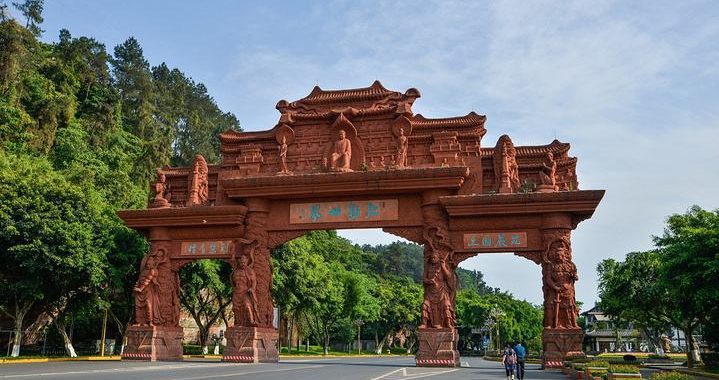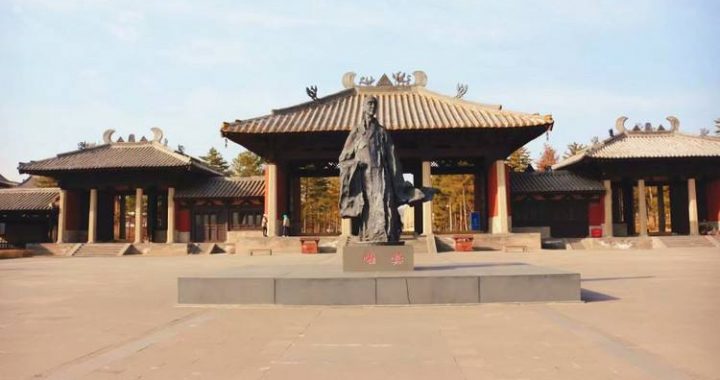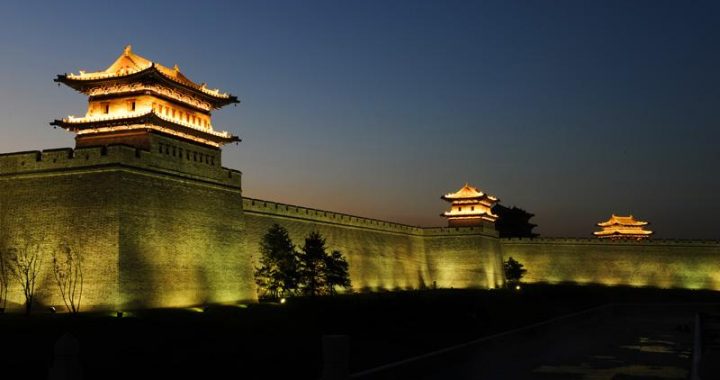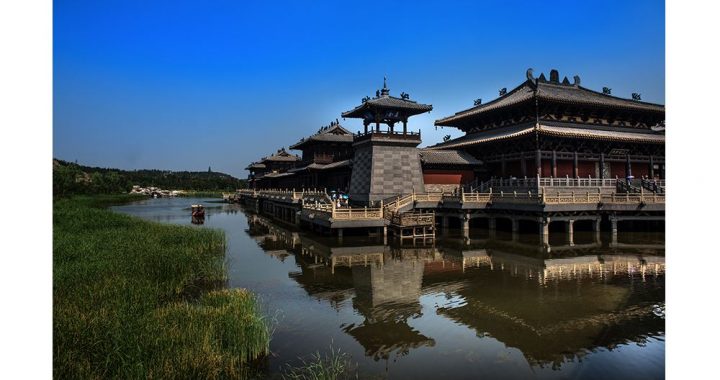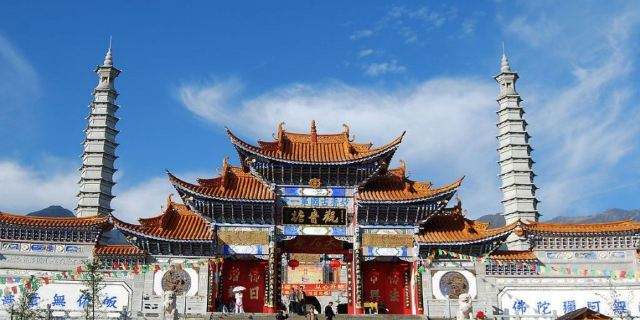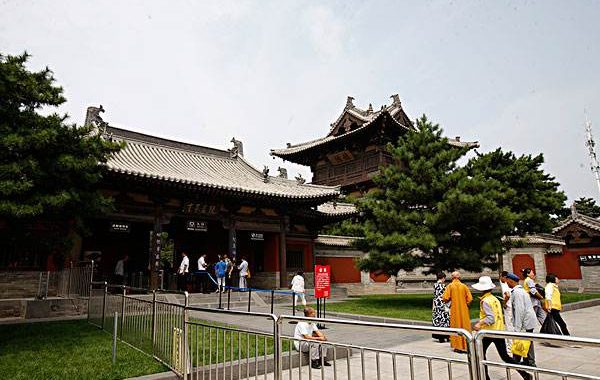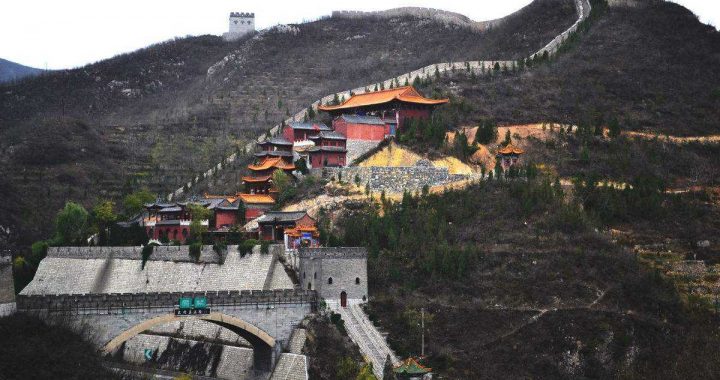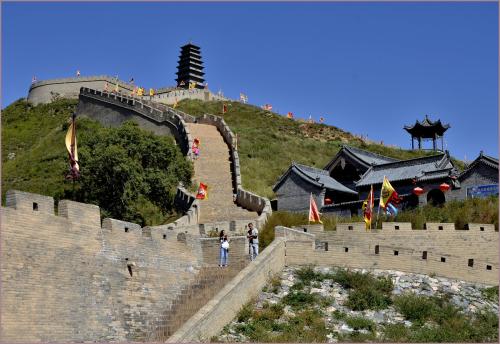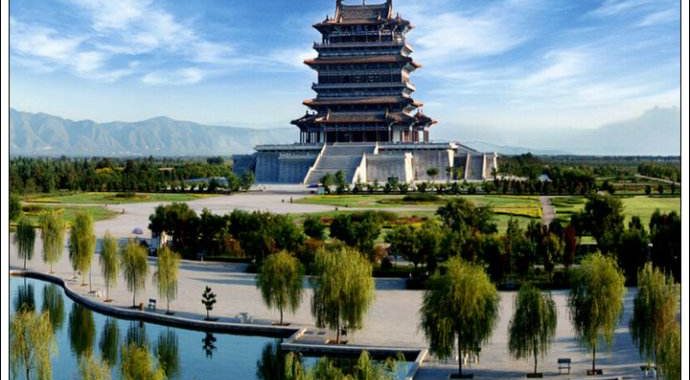Colorful Styles
19 min readThe capital of three dynasties,a strategically important place for two dynasties, and a place of national integration;10,000-years old Northern Mountain,1,000-years old Yungang Grottoes, and 50-km city full of national treasures Datong is a well-known place characterized by history as a site of national fusion and multiculturalism. The designation of Pingcheng(today’s Datong) as theadministrative “county”was the start of a period lasting over 1,000 years when the ethnic minorities living there ruled the land.
In 430, Emperor Daowu of the Northern Wei Dynasty unified the north of ancient China after destroying the Northern Liang state; in 589, Emperor Wen Yang Jian unified ancient China. This period has been designated by history as that of the Northern and Southern Dynasties. In 907, the Khitan people established the Liao Dynasty and launched wars against the Northern Song Dynasty. Nuzhen people founded the Jin Dynasty in 1115 and struggled against the Southern Song Dynasty after destroying the Liao Dynasty in 1125. In 1234, the Jin Dynasty was destroyed by the Mongolians. This period, namely from 907 to 1234, is referred to as that of the”Southern and Northern Dynasties”. The two periods of was the time when Datong reached its peak, and became the so-called “capital of two dynasties, and second capital of two more.”
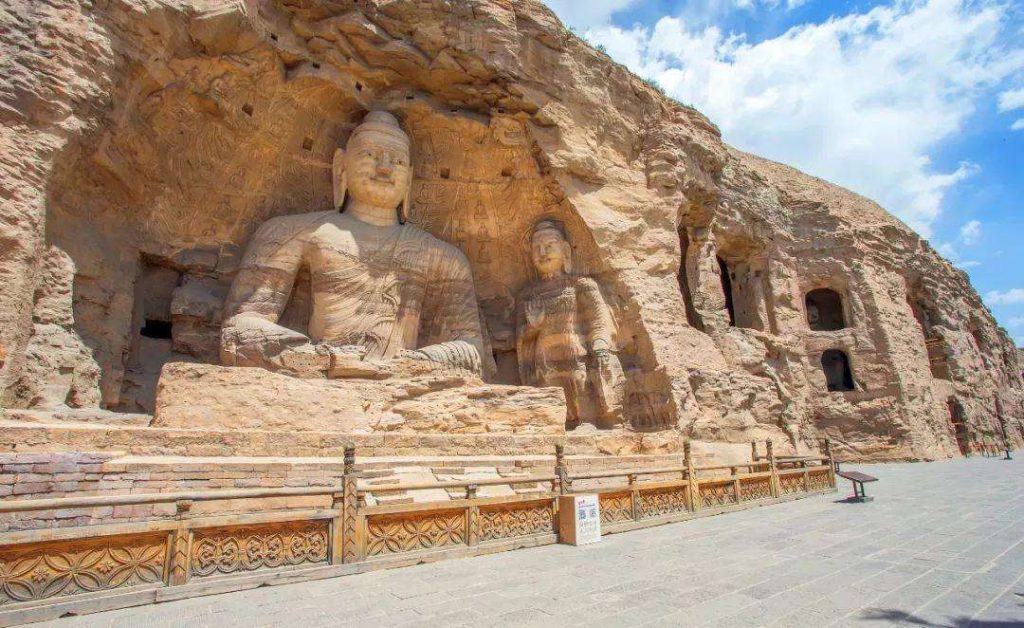
Pingcheng was the capital of the Northern Wei Dynasty, attracting an inward migration of about a million people from dozens of ethnic groups in succession.
These included the Shanhu, Tugehu, Lushuihu, Dingling, Wuhuan, Dangxiang, Di and Qiang. With national unification in the Sui Dynasty, Tujue people occupied the region north of Yanmen Pass. In the middle period of the Tang Dynasty, people of the Huihe(Uygur) ethnic group from tnnorth of Gobi desert moved to Datong. In 936, ShiJingtang ceded 16 prefectures in the Hebei and Shanxi to the Khitan. Thus Datong acted as the auxiliary capital of the Liao, Jin and Yuan dynasties for a combined total of 433 years.
Just as national integration typified the soul of the Northern Wei Dynasty, the folk customs of northern ethnic minorities became the cultural representation and historical characteristic of the ancient capital Datong. As we know, this is a fascinating city relying on the combination of Han and ethnic minority cultures, and the co-existence of various national customs.

What is most worthy of visiting in Datong? The answer is surely the ruins of different ethnic groups, especially the northern ethnic minorities spread overthousands of years, and the novel historical records of their folk customs. The ruins of Pingcheng retain the exotic styles of ethnic minorities and provide data for the interpretation of the lives of these minorities, including the nationalitiesborn in the grasslands and the remote Western Regions, and even the ethnic groups of foreign countries such as India, ancient Rome and Greece.
Yungang Grottoes display the colorful fusion of the Chinese and Western civilization-the excellent sculptural works of the grassland ethnic groups represented by the Xianbei ethnic group, the Western Regions, the Central Plains and ancient India. Painted sculptures of Huayan Temple and Avalokitesvara Temple, and the buildings in Dayun Temple of Hunyuan were masterpieces created by the Khitan an Nuzhen people; the main buildings in Guandi Temple, and the murals of Yongan Temple in Hunyuan, and the murals of Dayun Temple were left by the Mongolians; the Nine Dragon Wal1, meanwhile, is a witness to the glory of the Ming Dynasty…
Yungang Grottoes lie along the southern part of Wuzhou Hi1l in Pingcheng.
Originally known as “Lingyan Grottoes Temple”, the interconnected grottos cover15 km from east to west. Scholars of the Jin Dynasty praised them as a national treasure and residence of immortals and sages.
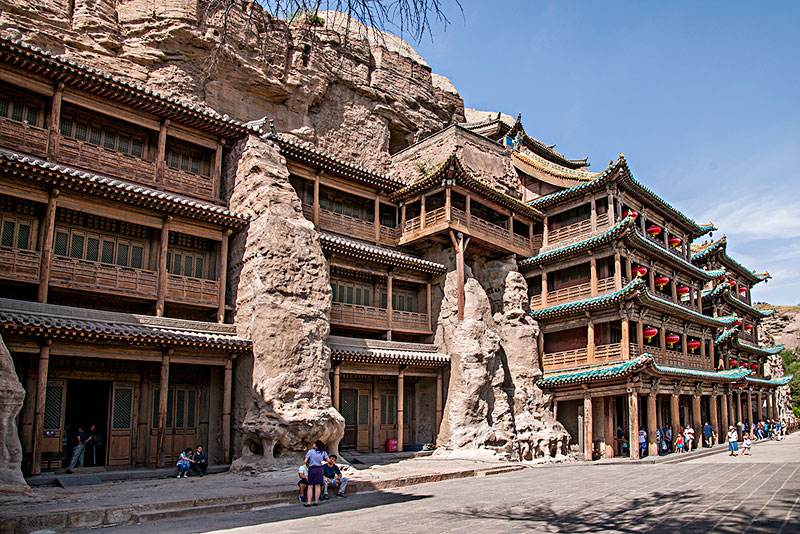
The mountain where the grottoes are located winds like a string of green clouds.
Ci Yuan (Chinese Etymology Dictionary) explains that it is the source of Yungang Grottoes.
As the material embodiment of State will, the grottoes reflect the rise of Buddhist fervor and the highly prosperous economy and culture of the Northern Wei Dynasty in the 5th Century. Built under imperial order, the overall layout is unified and reasonable.A1l the grottoes are organically coherent, and all the statues create a sense of concerted action orderly and harmonious. As the direct embodiment of the emperor’s will, Yungang Grottoes reflects the history, mental outlook, ideology, social conditions and folk customs of a dynasty in a highly visualized and artistic way.
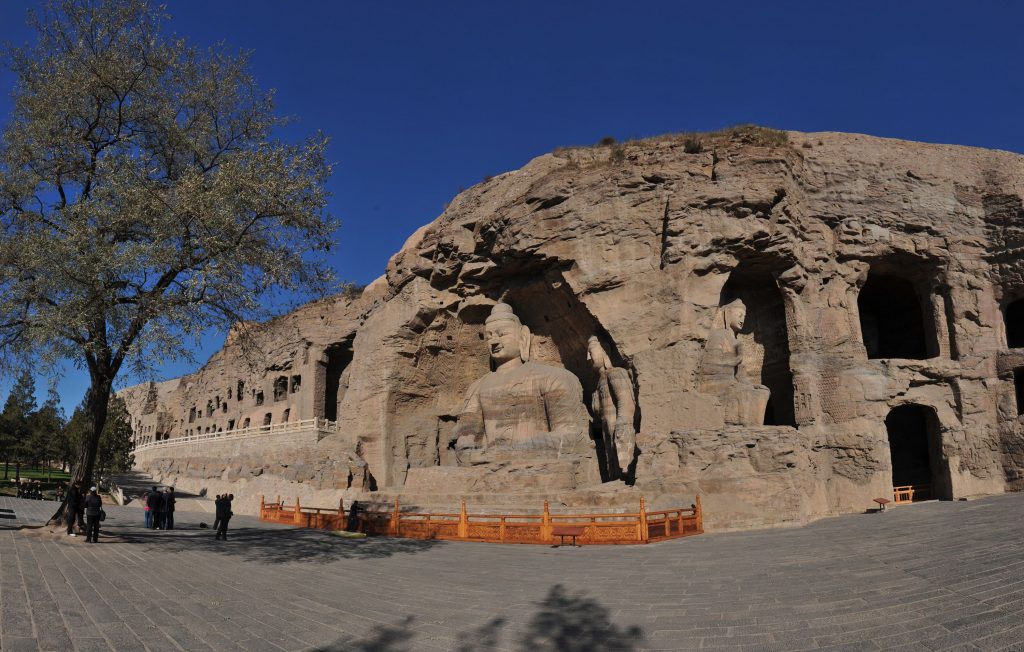
As soon as he ascended the throne, Emperor Gaozong ordered that no efforts should be spared to bring into full play the role of multi-ethnic craftsmen fromLiangzhou(today’s Wuwei in Gansu Province), the Central Plains and other regions.
They included the eminent monk Tan Yao, the talented Wang Yu and the sculptors Dai Kui and his son of the Southern Dynasties. Many of the statue arts developed in Gupta Dynasty of India were used for reference, and various sculpting techniques were used. There was great activity on Wuzhou Hill as the caves were being dug and the statues carved. The accuracy in the depiction and the color of statues were excellent, thus creating an exquisite and glorious scene.

The grottoes have arched roofs shaped like the horseshoe of early times. They are similar to Indian grottoes looking somewhat like a thatched cottage. The statues normally wear a kasaya with the right chest or the shoulder bared; Buddha wears a coronet and a pearl and jade necklace, with a bracelet on the arm and convex drapery. The grotto and statues are majestic even though the layout is simple, inheriting the artistic style of Gandhara in India, and also the grassland style ofTuoba, and combining the ethnic characteristics of the northwestern China, includingthe Western Regions, Shaanxi and Gansu. Historic symbolization is the connotation of sculpture during this period. Statues of five emperors reflect the legend of one great dynasty.
Most grottoes were created to a plane and square design, and were divided into two parts. There were few large statues like those in Five Grottoes of Tan Yao, but the Buddhist content is extremely rich. Buddhist statues gradually became plainer, and the kasaya was changed into the loose dress for nobles of the Southern Dynasties. The project scale was huge, and the indoor decoration was splendid andcolorful. Political realization was the distinctive tendency of sculpture during this period, which indicates that Tuoba tribe was moving further towards Sinicization. The mainstream style of being plain with loose dresses was mixed with the grassland style of the Tuoba.

The unique originality of the double-grottoes and double-Buddha’s implies the pattern of State governance by Empress Feng and Emperor Gaozu of Northern Wei. Tw Buddha’s sit in parallel east to west, and there are nearly 400 such pairs.
Archaeologist Su Bai argues that this was “the result of the specific political situation in that era.”The statues in that era have distinctive feminine characteristics, which is significant. The solemn statues of “six beauty providers”with flowers in the seventh grotto are very representative. The feminization of Buddhist statues broke the previously trend that all Buddha’s were male-becoming a major innovation in grotto art.
Empress Feng was a woman of Han ethnic group, but was a legendary empress of the Northern Wei Dynasty. She was born in Xindu of Changle(today’s Jixian County ofHebei). Her grandfather Feng Hong (Wentong) was the king of the Northern Yan(the capital Longcheng is today’s Chaoyang in Liaoning Province). The Northern Wei Dynasty annexed the Northern Yan when Empress Feng, then aged under 10, was captured and taken to the palace in Pingcheng. Empress Feng was gifted and smart, and was familiar with court affairs. Soon she was selected as the concubine of Tuoba Jun, Emperor Gaozong. At the age of 14, she cast the exquisite and auspicious copper people, and outshone other concubines, to become the empress. When Emperor Gaozong’s son, later Emperor Xianzu, was selected as crown prince, the custom of the dynasty was that “the mother of the crown prince must die”; thus, his birth mother Concubine Li committed suicide by imperial order and Empress Feng became the boy’s wet nurse. When Emperor Xianwen died young, the 24-year-old Empress Feng helped Emperor Xianzu, then aged 12, to handle State affairs. Many years later, Empress Feng forced Emperor Xianwen to abdicate and hand over the crown to her own five-year-old son, who became Emperor Gaozu Tuoba Hong. She held court from behind a screen. In September 490, Empress Feng died and was buried in Yonggu Tomb on Fangshan Hi11(today’s Liangshan Hill in Datong) in Pingcheng. Emperor Gaozu respectfully called her “civilization”Empress Feng after her death.

Empress Feng suppressed the rebellion of the Prime Minister Yi Hun, held responsible for the mid-phase project of Yungang Grottoes, expanded Pingcheng, and formulated what became known as the Taihe Reform, an aggressive program of cultural Sinicization. She was another in the small group of distinguished empress in Chinese history after Empress Lu and Empress Wu Zetian. In the Huifu Temple Stele of the Northern Wei Dynasty, Empress Feng and her husband were collectively called the “two sages”or “two emperors”. As historical records state:”Our emperor is civilized and unconventional… Grandma-empress is foresighted…”Therefore,a three-storey pagoda was separately built for them in the favorable geographical position.
In the late construction period of the Yungang Grottoes, the capital was moved to Luoyang. Then, spontaneous carving prevailed instead of overall planning. The grottoes inherited the style in the middle construction period, and tended to be smaller than before. The Buddha statues became more beautiful, and wide sleeves and ribbons were very popular. Civil life was the theme of that period: folk music and dance, and acrobatics symbolized the maturing cultural Sinicization and national integration of the Northern Wei Dynasty.

According to the order of Emperor Gaozong, Tan Yao excavated five grottoes in Wuzhou Hill and created five Buddha statues. The five grottoes today are listed as nos.16 to 20. In the bipolar world of “worshiping Buddha”and “suppressing Buddhism”,a new concept of “worshiping emperor means worshiping Buddha”emerged to emphasize the unity of imperial power and Buddhism. That is to say, the statues became more personified, and carving statues with the emperor as the prototype became the main principle, creating a greater sense of affinity and human interest.
This reflects the spiritual journey of Tuoba family, politics and national integration of the Northern Wei Dynasty.
The main theme of Sinicization in the Northern Wei Dynasty is consistent with the historical trend. The statues of Yungang Grottoes created in the middle and late periods, and the Longmen Grottoes in Luoyang, symbolize the results of this. To some extent,a cost had to be paid in terms of loss of carving art, which became more evident with the passage of time. The relationship between art and politics is sometimes synchronous but also opposite at times.
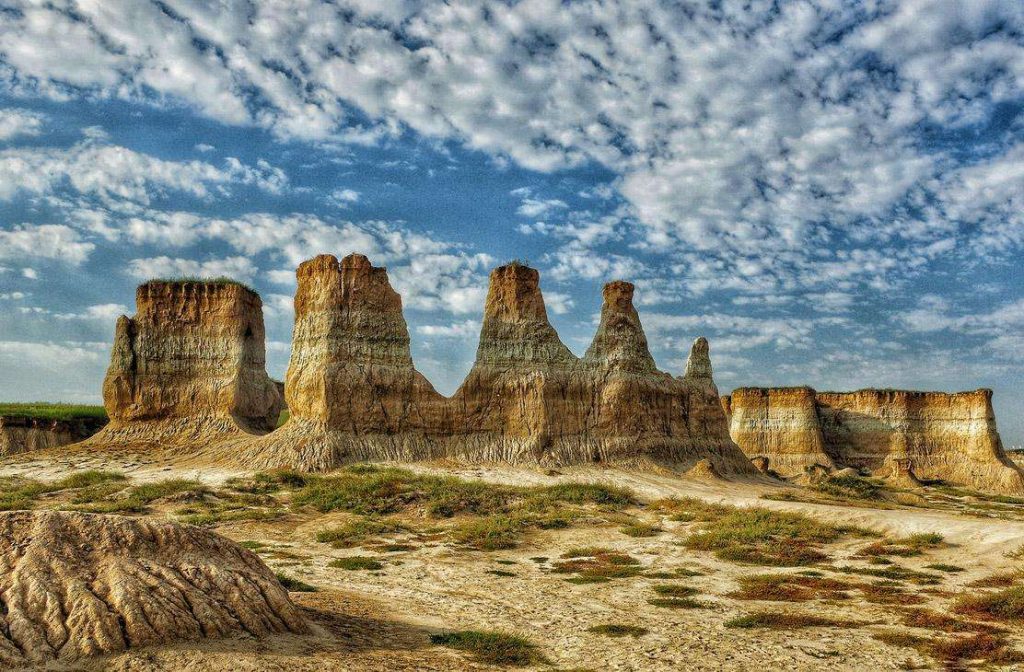
Compared to those of Sinicized style, the grottoes and statues in the early and middle construction stages reflect a carving spirit, life strength and vigor, and have more visual impact and mental shock power that is spectacular. Square rooms are orderly; square towers are mainstays; large windows are bright and spacious; in fact, there is a great sense of transparency. Especially those numbered 16 to 20 are high and great, and unique in the world. When people pass by the Buddha’s, it is said, all the troubles and sorrows will disappear.
Beauty is the soul and root of art, and also a source of joy and tranquility.
The Buddha’s in Yungang Grottoes create an atmosphere that quiet, solemn and gracious, transporting one far from secular troubles.
The “original”sculpture art at the early construction stage of Yungang Grottoes reflects the essence of poetry and painting, and physical and mental essence of the time that is both beautiful and imaginative, fresh and alive, and infinitely charming. Thousands of Buddha statues, with various kinds of expression amiable and compassionate, with thin eyebrows, long eyes and an eternal smile-provide an atmosphere that is relaxed and harmonious to bring a bright warmth to the visitor like a beautiful flower or gentle sunshine that is the great art and charm of Yungang Grottoes. No matter how perfect the carving techniques of Sinicized period of the Northern Wei Dynasty, they lose the “original”charm, for the statues at the late construction stage are thin, slender and dignified.

This was a time when only Chinese language could be spoken. The Xianbei language was forbidden, thus resulting in the silent disappearance of one nation.
Everyone has a threefold existence: body and soul, and cultural life. The physical life (body); spiritual life(including will and thinking); cultural life(dynamic culture, making life sublimate to the conscious level).
As a kind of spiritual phenomenon, culture has two distinctive directions: outwards, culture is a way of self expression and interpretation of the world; inwards, culture is the nutrient for the thriving of life and soul.
Culture is everywhere, like the fragrance of flowers filling the air. Invisible culture is complex, hidden behind and buried deep within things. The relationship is like that between poetic thought and lines of verse, that between the building concept and the building itself, that between the wind and willows, and that between time and the clock that displays it. The day is like one eye, and the night is like the other; the day is shallow, while the night is profound.
Culture is multifunctional; it plays its role gradually rather than rapidly. Two lines of a famous poem declare:”It follows the wind secretly into the night, and moistens all things softly, without sound.”As recorded in the Sayings of Confucius:”Living with a virtuous man is just like entering a room full of orchids. After a long time, the fragrance of orchids cannot be smelt because the fragrance has become part of his body.”The rule of orchids is that, after a long time, their fragrance can no longer be smelt.
Language is the material shell of culture and history, and the character system of a nation. Language certainly is symmetrical to the national cognitive psychology.
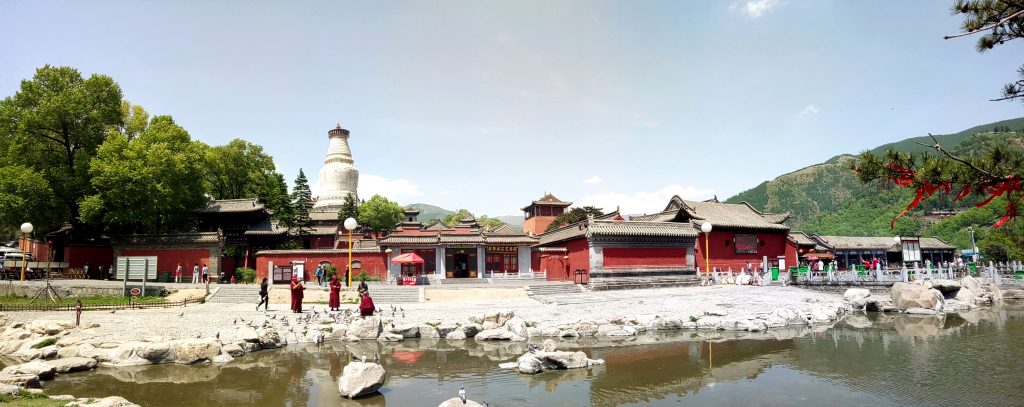
Once the language is broken and lost, the culture of a nation will become a desert, the historical gate will be permanently closed, and the culture and historical road of this nation will be cut off forever.
Today in the context of globalization, languages face winter. February 21 is an ordinary day, but it is also International Mother Language Day with profound meaning.
France passed a law that any advertising on the Internet must be translated into French. The then President Jacques Chirac explained that this was designed to defend the international status of the French language.”During the cultural confrontationin the Internet age, it is necessary to prevent the loss of the language of Moliere and Camus on the information highway”.
A11 countries are realizing the significance of defending the safety of local culture and protecting cultural sovereignty.
The towering Yungang Grottoes remain a model forever. As the climax works of Buddhist art in the golden era of the Northern Wei Dynasty, they not only have epochal significance as the “Yungang mode”, and also are a guide to the style of grottoes in Wanfotang Grottoes, Yi County, Liaoning (in the east), grottoes in Shaanxi, Gansu and Ningxia (in the west), and the Mogao Grottoes in Dunhuang at the Western end of the Hexi Corridor. In addition, the Yungang Grottoes mark the startof the great localization of Buddhism in China, including translation of Buddhist scriptures, interpretation of doctrines, and artistic innovation and expansion.
In the 1930s,a number of scholars and writers visited Yungang, including Chen Yuan, Zhou Yiliang, Hu Shi, Liang Sicheng and Lin Huiyin. Xu Zhimo and Liu Xiaoman yearned to visit, and even created a five-episode drama based on the grottoes. Lu Xun did not climb Wuzhou Hill, but imagined it in the “Three-Flavor Study”: Yungang Grottoes is a large building standing in the desert. The Orchid Pavilion Preface engraved on a little ivory plate is known as a “work of art”. But if it is put in front of the Buddha in Yungang Grottoes, it will become insignificant.
Yungang Grottoes, in the eyes of Zheng Zhenduo and Bing Xin, is vivid and delicate:'[ Their] grandeur and greatness is beyond our imagination. Every grotto, every statue, every head, every gesture, even every fold in the clothing, and each ornament, are worthy of careful appreciation, observation, analysis and study.… of course, it can be said to be the largest museum of sculpture. Everything in the Yungang Grottoes seems to be soft, kindly and beautiful. The complete layout can be seen here and there, thus making it complex and gorgeous.
‘ Like a beautiful mountain full of numerous treasures, each grotto makes visitors dazzled. The works of uncanny workmanship are amazing. Everything is accurately painted. It is so wonderful that you will forget to leave, seemingly dreaming of the heavenly palace. But after waking up, you will find that no words can describe the dream!’
After the Northern Wei Dynasty, the Liao Dynasty and the Jin Dynasty successively designated Datong(Xijing) as the auxiliary capital.A Buddhist edifice was built, and the magnificent Buddha statues in Huayan Temple and Shanhua Temple were colorfully painted.
Expect for the Huayan Temple, on a west-east axis, all temples in China are positioned north-south. Perhaps because the Khitan people worshiped the sun, or, for the purpose of heating, the doors of their yurts always face eastward.
In the magnificent and rare Huayan Temple and Shanhua Temple,29 statues of the Liao Dynasty are preserved intact, except for a handful of painted sculptures that were rebuilt in the Ming and Qing dynasties.
Like the Yungang Buddha, each statue of Huayan Temple has a wide body, broad shoulders, high nose and wide forehead, artistically retaining the style characteristics of the grassland ethnic minorities. Bodhisattva statues displayvarious poses and gestures including sitting, standing, raising hands or putting palms together. The statues are vivid, sweeping away the quiet and solemn atmosphere and the rigid style, and making people feel as if they are in the marketplace. Some experts comment on the painted sculptures of Liao and Jin Dynasties as follows:
‘ The proportion is rational, and the expressions are especially vivid’. They are better than the statues in the Hall of Saintly Mother of Jin Memorial Hall, and are rare works of art.
The writer and scholar Zheng Zhenduo recalled in his works:’ When the young monk opened the gate of Huayan Temple, we were surprised and gasped in admiration.
It is one great mine of statue treasures. We have never seen so many beautiful statues… just like a museum. The Buddha statues of Huayan Temple are solemn, but several Bodhisattva statues are so beautiful. The faces, eyes, ears, lips, fingers, bare feet, graceful slender waists, etc., are so beautiful. The gesture of leaning is extremely charming, and is similar to that of Venus de Milo at the Louvre Museum in Paris. The soft folds and lines of silk clothes make the clay beauty seem alive.’
The facial part of each Buddha statue in the Huayan Temple is decorated with copper, and sparkles. Most amusingly, the Khitan women imitated the Buddha to mak up. Zhang Shunmin wrote in the Shibei Records:’ Women in the Shibei region use yellow paste like copper on their faces, which is called “Buddha makeup”.’ Peng Ruli of the Song Dynasty wrote a poem:’ One beauty wearing one pearl topknot made her face yellow. The Han people and ethnic minorities ruled by the Southern Song Dynasty thought she had caught malaria,[ but] officials praise it as Buddha makeup.’
As to the internal structure of Mahavira Hall of Huayan Temple and Triple Saints’ Hall of Shanhua Temple, the technique of reducing the hypostyle columns or moving those in the front row forward or backward is adopted to avoid blocking the vision or to adjust and expand the space. The external two eaves of the Triple Saints’ Hall of Shanhua Temple separately have a 60-degree oblique arch, which bearsthe weight and has high appreciation value. Like the midsummer peony, they are grandand magnificent. They are extremely rare in the history of architecture, and are the unique contributions of the Liao and Jin dynasties.
Over the rear walls of Huayan Temple are more than 40 pavilions, which are built based on the corresponding scale of actual building dimensions of the Liao Dynasty.
They were engraved subtly and exquisitely. Liang Sicheng put his palms together, and praised them as ‘ unique at home’. The colored sculptures, caisson ceilings, internal grooves and color paintings, were all created during the period between 1032 to 1058 in the Liao Dynasty, and are perfect.
During Jin’s destruction of Liao, Shanhua Temple was burned down. The pavilions and the temple were utterly destroyed. In the Shanhua Temple, there is one stele named “records on rebuilding the hall of Pu’ en Temple, Xijing, Jin Dynasty”.
With the fine structure and wonderful words, the stele records the cause and effectof rebuilding Shanhua Temple after the war. Who was the writer? He was Zhu Bian, the granduncle of Scholar Zhu Xi of the Southern Song Dynasty.
In the Liao Dynasty, there was another outstanding building in Datong, namely the Shakyamuni Pagoda in Fogong Temple, Yingzhou(today’s Yingxian County). With abottom diameter of over 30 meters, the pagoda is 60 meters high,16 meters higher than that of the White Dagoba in Beijing. It was built in 1056 or the second year of the reign of Emperor Daozong in Liao Dynasty. It is so high and grand. Shakyamuni Pagoda, Yungang Grottoes and Hanging Temple are the three wonders of Datong.
Shakyamuni Pagoda, Eiffel Tower of Paris and the Leaning Tower of Pisa are the world’s three major towers).
The wooden pagoda in Yingzhou looks like a skyscraper far away and a lotus nearby. It is exquisite and tall, and is the best in the land. It is the sole extant wooden tower. The octagonal structure is broad and spectacular, and is full of grace and elegance. Due to its 60 kinds of dougong of different shapes and functions, it won the title of “Dougong Museum”of China’s ancient architecture. It is amazing that such a huge pagoda contains not a single nail. Mortise and tenon fit closely, and alternate hardness and softness. All are in harmony, and the pagoda is dynamic and vivid. In the Yuan Dynasty,a 6.5-magnitude earthquake occurred in this area.
Except for the wooden pagoda, all other towers and temples were destroyed. Materialsof only six specifications were used for the main body. The maximum length of timbe is 13 meters, the maximum height of pillars is less than 10 meters, and the pillar diameter is 60 cm. It is a model of a large building composed of little materials.
Its facade composition is strikingly similar to the body scale of Leonardo da Vinci.
It is a masterpiece in many disciplines such as mathematics, aesthetics, mechanics and architecture.
Dayun Temple is located in Jingzhuang Village, Dongfangcheng Township, Hunyuan County. It was built in1166 or the sixth year of the reign of Emperor Shizong in the Jin Dynasty, and was repaired in the Yuan, Ming and Qing dynasties. The original temple comprised of groups of buildings facing south. Along the central axis are two courtyards and three halls, namely Shanmen Hall, Hall of Heavenly King and Mahavira Ha11, gradually rising in succession. The bell tower and drum tower run east to west, and the left and right wing-rooms cover an area of about two hectares The murals of the Yuan Dynasty in the Mahavira Hall are multi-colored, with scarlet and stone blue as essential colors, and are inlaid with gold.
Dayun Temple was a northern temple with the function of “controlling the forces of nature”. The poet Yuan Haowen and the traveler Xu Xiake both visited it.
Calligrapher Zhao Zhijian of the Qing Dynasty was among those who highly praised it.

Yong’ an Temple lies north of the Drum Tower in Hunyuan County, and is a cultural relic site under national key protection. It was built in the Jin Dynasty, but was later destroyed by fire. In the early Yuan Dynasty, the Yong’ an Jiedushi Gao Ding and his son Gao Zhongdong funded the reconstruction, thus changing the name to “Yong’ an Temple”. This temple has a total area of approximately 4,000 m2, and has a unique layout. There is one well-preserved huge mural of the Yuan Dynasty, with the exact delineation, smooth lines, and bright colors. The numerous characters in the murals, with different expressions, are very vivid. Visitors regard them as rare and unique at home and abroad.
Guandi Temple, or Grand Temple, is the largest temple enshrining and worshipping Guan Yu located in the north of Shanxi Province. Along the north-south central axis are Shanmen Hal1, Guo Hall, Wusheng Hall and Chunqiu Hall; on both sides of the central axis are supporting halls of different sizes and priority. The western yard of the Temple is divided into two parts, namely Jieyi Park and Yaoyue Park. Nine Dragon Wall is the first in China in terms of sculpting time, size and artistic skill. The dragon shadow reflects on the water surface of the pond in front of the wall. In bright sunlight, it seems as if dragons are playing in the pond. The sunlight is reflected on the dragon wall, and nine colored dragons with swayingwings are ready to fly. Zheng Zhenduo said in Travel in Datong:’ The Nine Dragon Wall is located at Heyang Street… Nine dragons playing are so lively… This wall is much older than the Nine Dragon Wall in Beihai Park [ in Beijing].”
The flame at the sea bottom is not burning, but its singing sound can be heard, with the loud wave sound under the moonlight.
The flame at the sea bottom
is not burning, but its singing sound can be heard, with the crazy sea waves under the moonlight.
The territorial expansion and extension of the regime extension cannot be considered enough to represent the final interpretation of national integration. Only common culture, especially common core values can ultimately create national unity and unification.
In essence, the Northern Wei Dynasty is the result of multiple cultures of great quality. It absorbed a migration from forest to prairie and the great plains in succession, and moved the capital from Shengle to Pingcheng and Luoyang successively. Each migration of the Tuoba represents cultural openness, integration, upgrading and positive result. The Northern Wei Dynasty is a special station in the spiritual journey of the Chinese nation, and also a historical turning point of Chinese civilization. It made a huge contribution to the breadth and depth of national integration and the lasting glory of the Chinese nation. It inherited the essence of the past dynasties, and laid a foundation for the glory of the later dynasties.
Datong has witnessed the coexistence of the Han ethnic group and other ethnic minorities for eons. After the Northern Wei Dynasty, Khitan, Nuzhen and other ethnicminorities in Pingcheng (Datong) continuously created the culture and civilization that amazed the world. Datong, an ancient capital with a history of over 1,000 years, shows its distinctive features and unique scenery.
The trend of globalization started in the late 20th Century and has accelerated ever since towards a united and harmonious whole.
But globalization does not mean centralization, which is an anathema!
Globalization should refer to diversity in many aspects, otherwise, it will prove to be opposite to the original good intentions of the people, and will become distorted and short-lived. Biology shows a single species cannot survive in theworld. The Internet has provided the space for the full release of personality.
Everyone is a center and a leading character in the evolutionary process.
The Book of History talks of ‘ coordinating relations among nations”. The world cannot be a single entity. Globalization involves a world of universal harmony with a shared core vision: that everyone enjoys an equal and better life where each individual can fully show their personality; different nationalities freely and fully maintain their own national characteristics; and all human beings livetogether harmoniously, helping each other. Colorful globalization must be the pursuit of the human race. People yearn for the unity of diversity and harmony.
Diversity is like the colorful flags of different countries, and harmony means a new world order advocated by the people.
